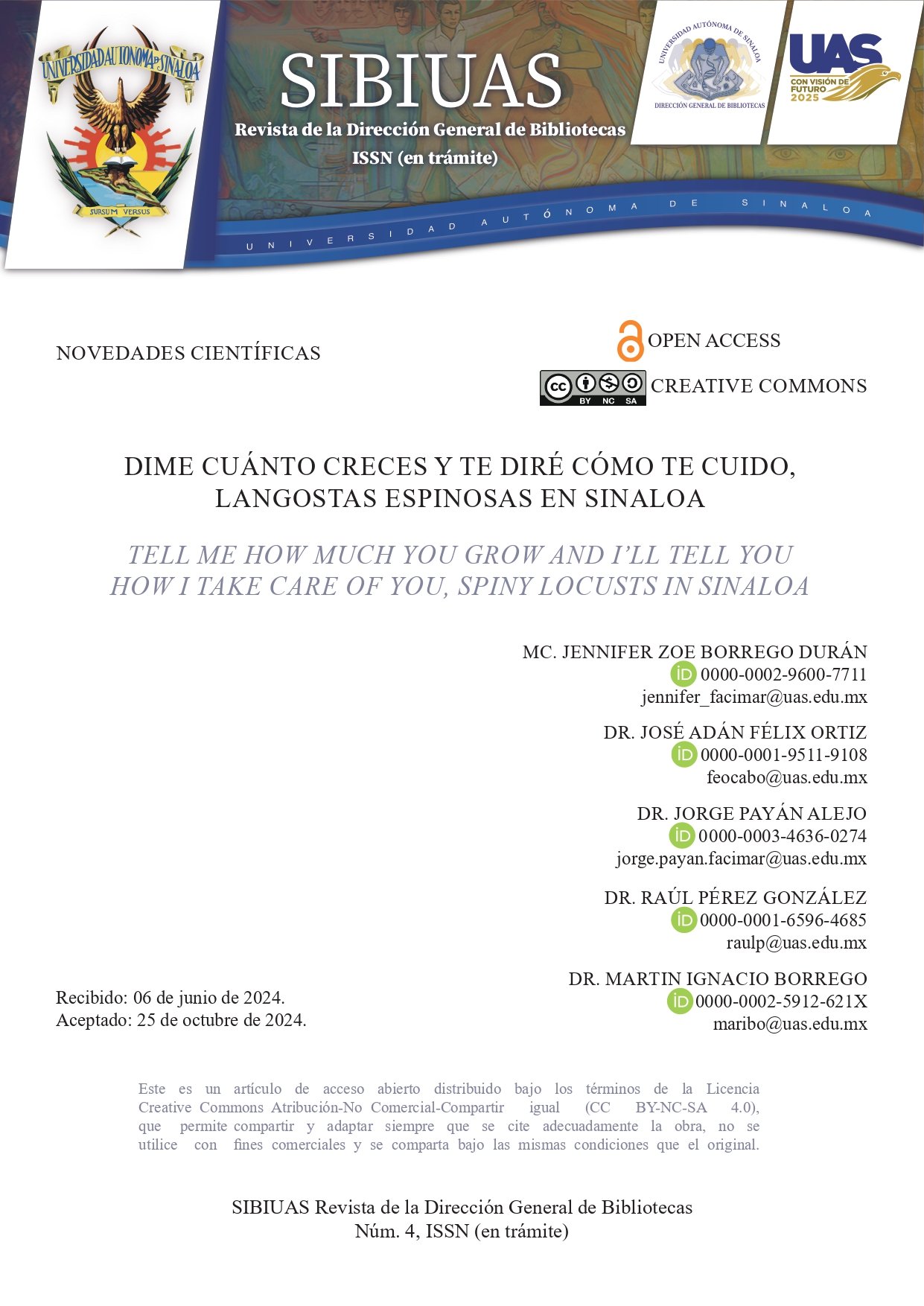Tell me how much you grow and I’ll tell you how I take care of you, spiny lobster in Sinaloa
Keywords:
Lobster, Marine ecosystems, Sustainable fisheries, PreservationAbstract
Lobster, a prized delicacy in restaurants worldwide, holds a fascinating story beyond its gourmet appeal. These crustaceans have a lengthy and intricate life cycle, taking 4 to 12 years to mature before reaching our plates. Their journey begins as larvae drifting in the ocean for months before developing into juveniles and eventually becoming adults. Lobsters are vital intermediate predators in marine ecosystems, maintaining balance within the food chain by preying on smaller species and serving as prey for larger animals. Additionally, they provide habitats for various marine organisms. The sustainable management of lobster fisheries presents a significant challenge, particularly due to gaps in reliable data on population health. Recent research has pioneered innovative techniques to estimate lobster age, such as analyzing growth marks in their eyes and stomachs. Furthermore, alternative strategies, including adjusting minimum catch sizes and employing advanced stock assessment methods, have been proposed to promote sustainability. These initiatives are crucial to preserving lobster populations and safeguarding their essential ecological roles for future generations.
Downloads
References
Álvarez, F., Villalobos, J. L., Hendrickx, M. E., Escobar-Briones, E., Rodríguez-Almaraz, G., & Campos, E. (2014). Biodiversidad de crustáceos decápodos (Crustacea: Decapoda) en México. Revista Mexicana de Biodiversidad, 85(1), 208–219. https://doi.org/10.7550/rmb.38758
Borrego-Durán, J. Z. (2022). Edad y crecimiento en langosta Panulirus gracilis (Crustacea: Decapoda) por medio de estructuras calcificadas (Tesis de maestría). Facultad de Ciencias de Mar, Universidad Autónoma de Sinaloa, Mazatlán, Sinaloa, México.
Diario Oficial de la Federación (DOF). (2018). Norma Oficial Mexicana NOM-006-SAG/PESC-2018, para regular el aprovechamiento de todas las especies de langosta en las aguas de jurisdicción federal del Golfo de México y Mar Caribe, así como del Océano Pacífico incluyendo el Golfo de California.
Hay, M. E. (2010). Crustaceans as powerful models in aquatic chemical ecology. En Chemical communication in crustaceans (pp. 41–62). Springer New York.
Pérez-González, R. (2011). Catch composition of the spiny lobster Panulirus gracilis (Decapoda: Palinuridae) off the western coast of Mexico. Latin American Journal of Aquatic Research, 39(2), 225–235. https://doi.org/10.3856/vol39-issue2-fulltext-4
Phillips, B. F., Melville‐Smith, R., Kay, M. C., & Vega‐Velázquez, A. (2013). Panulirus species. En Lobsters: Biology, management, aquaculture and fisheries (Capítulo 10). Wiley Online Library. https://doi.org/10.1002/9781118517444.ch10
Phillips, B. F., & Kittaka, J. (2008). Introduction: Ecology and fishery biology of spiny lobsters. En Spiny lobsters: Fisheries and culture (Capítulo 1). Wiley Online Library. https://doi.org/10.1002/9780470698808.ch

Downloads
Published
Issue
Section
Categories
License
Copyright (c) 2024 SIBIUAS Revista de la Dirección General de Bibliotecas

This work is licensed under a Creative Commons Attribution-NoDerivatives 4.0 International License.

